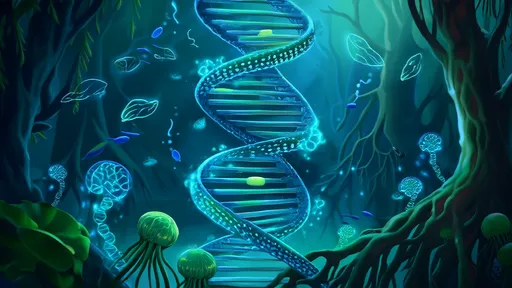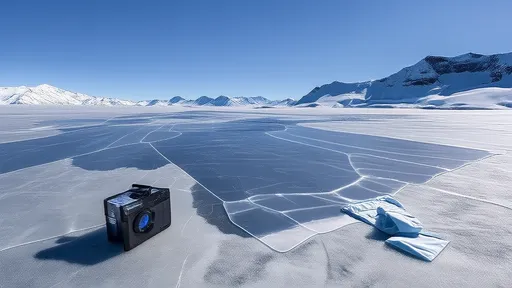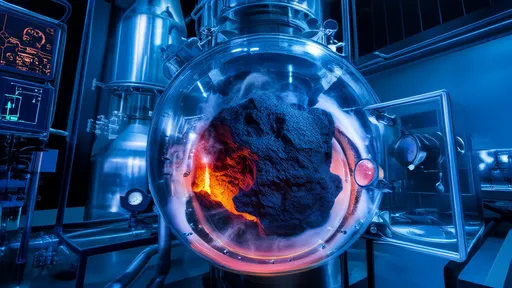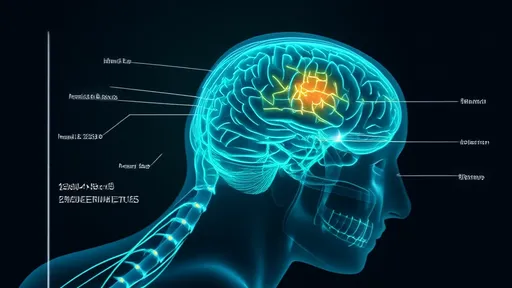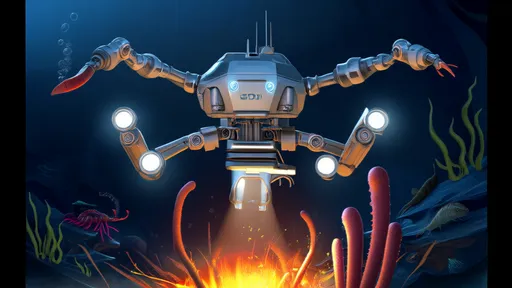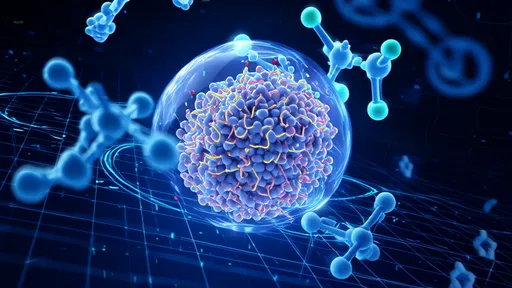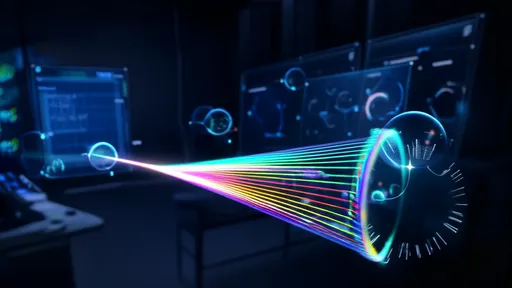In a groundbreaking development that merges cutting-edge physics with ancient archaeology, researchers have successfully utilized neutron holography to reveal hidden inscriptions beneath the patina of bronze artifacts. This non-invasive technique promises to revolutionize the study of corroded metal objects, offering unprecedented access to historical texts without damaging delicate surfaces.
The discovery emerged from a collaborative effort between nuclear physicists and archaeologists at the University of Oxford and the European Spallation Source facility. For decades, conservators have struggled with the dilemma of how to study inscriptions obscured by centuries of oxidation without compromising the integrity of precious artifacts. Traditional methods like chemical cleaning or physical abrasion often risk permanent damage to both the patina and underlying metal.
Neutron holography works by exploiting the unique properties of subatomic particles to create three-dimensional images of internal structures. Unlike X-rays, which interact primarily with electron clouds, neutrons penetrate dense materials more effectively and are particularly sensitive to light elements like hydrogen, carbon, and oxygen - the primary components of corrosion products. When a beam of neutrons passes through a bronze object, variations in absorption and scattering create interference patterns that can be reconstructed into detailed cross-sectional images.
Dr. Eleanor Westwood, lead archaeologist on the project, describes the first successful application: "We were examining a badly corroded Zhou dynasty ritual vessel from the British Museum's collection. Surface examination showed only faint traces of what might have been characters, but neutron holography revealed an entire dedicatory inscription recording a nobleman's gift to his ancestors. The text provided previously unknown genealogical information that changes our understanding of regional power structures during China's Spring and Autumn period."
The technical achievement represents more than just improved imaging capability. Bronze corrosion creates complex stratified layers where metallic compounds intermix with soil deposits and organic residues. Conventional tomography struggles to distinguish between these materials, often producing blurred or ambiguous results. Neutron holography's unique sensitivity to isotopic variations allows it to differentiate between corrosion products and the original alloy with remarkable precision.
Practical applications extend far beyond epigraphic studies. The method can map subsurface cracks and weaknesses in metal objects, informing conservation strategies. It also detects organic residues trapped within corrosion layers - potential evidence of burial offerings or manufacturing techniques. Most excitingly, the technology may finally allow scholars to read the notorious "cursed" tablets from Roman Britain, whose lead surfaces have fused into unreadable masses over two millennia.
Challenges remain before widespread adoption. Neutron sources require specialized facilities like particle accelerators or nuclear reactors, unlike portable X-ray equipment currently used in museums. The technique also generates enormous datasets requiring supercomputing resources for reconstruction. However, as computational power increases and neutron facilities become more accessible, researchers anticipate routine archaeological applications within the decade.
This innovation arrives at a critical juncture for cultural heritage preservation. Climate change accelerates corrosion processes in museum collections worldwide, while political instability threatens archaeological sites. Neutron holography offers a powerful tool for digitally preserving vulnerable artifacts before physical degradation erases their secrets forever. The team has already begun creating high-resolution archival scans of significant objects, ensuring future scholars can study them long after the originals may have deteriorated beyond recognition.
Beyond its technical merits, the project exemplifies interdisciplinary collaboration at its most productive. Nuclear physicists had developed neutron holography for materials science applications before realizing its archaeological potential. Archaeologists provided the historical context to transform raw data into meaningful discoveries. Such partnerships may become increasingly vital as humanities research incorporates advanced technologies from other fields.
Museum collections worldwide contain thousands of corroded bronze objects awaiting similar examination. From Mesopotamian foundation nails to Viking arm rings, these artifacts may conceal texts that reshape historical narratives. As neutron holography becomes more refined, we stand on the brink of rediscovering lost chapters of human civilization - not through new excavations, but by peering deeper into objects we've possessed all along.
The research team plans to expand their work to other materials, including heavily patinated silver and iron artifacts. Early tests suggest the technique may even detect faint traces of ink on ancient metal mirrors where surface polishing has obliterated visible traces. Each successful application reinforces neutron holography's potential to become archaeology's most powerful non-destructive analytical tool since the invention of radiocarbon dating.
The rhythmic lapping of brackish water against tangled mangrove roots conceals one of nature's most extraordinary genetic survival stories. For centuries, these salt-tolerant trees have guarded molecular secrets in their DNA that allow them to thrive where other plants perish. Today, scientists are cracking open this genetic vault through an ambitious international initiative called the Mangrove Gene Bank Project, with groundbreaking implications for global food security.
In the face of accelerating glacial melt due to climate change, scientists and engineers are turning to innovative solutions to slow the disappearance of these critical ice reserves. One such breakthrough is the development of high-albedo fabric covers, colloquially termed "glacial nanoblankets," designed to reflect sunlight and reduce ice ablation. These advanced textiles are emerging as a promising tool in the fight against rising sea levels and ecosystem disruption.
In the race to mitigate climate change, scientists and engineers are turning to the Earth’s own geological processes for solutions. One of the most promising avenues is basalt carbon mineralization, a natural chemical reaction that locks away carbon dioxide in solid rock. This process, often described as nature’s own carbon capture and storage (CCS) system, is now being harnessed and accelerated to combat rising atmospheric CO₂ levels. Unlike traditional carbon storage methods, which rely on fragile seals and uncertain long-term stability, basalt mineralization offers a permanent and geologically secure solution.
The concept of marine cloud brightening through aerosol seeding has emerged as a potential geoengineering strategy to combat global warming. By enhancing the reflectivity of clouds over oceans, scientists aim to increase Earth's albedo, thereby cooling the planet. This approach, while still in experimental stages, has garnered significant attention due to its promise of offsetting some effects of climate change without requiring drastic reductions in greenhouse gas emissions.
For decades, the study of chronic pain has been hampered by the inability to observe neural activity over extended periods. Traditional imaging techniques provide snapshots of brain activity but fail to capture the dynamic, evolving nature of pain processing. A groundbreaking approach using transparent skull implants is now revolutionizing our understanding of how chronic pain manifests and persists in the brain.
In the perpetual darkness of the deep sea, hydrothermal vents spew superheated, mineral-rich fluids into the frigid water, creating oases of extreme chemistry that have fascinated scientists for decades. These underwater geysers, often located along mid-ocean ridges, host complex reactions that may hold clues to the origins of life and the formation of mineral deposits. Until recently, studying these dynamic systems in their natural state posed immense challenges—until the advent of deep-sea chemical robots capable of in situ monitoring.
In a groundbreaking development that merges cutting-edge physics with ancient archaeology, researchers have successfully utilized neutron holography to reveal hidden inscriptions beneath the patina of bronze artifacts. This non-invasive technique promises to revolutionize the study of corroded metal objects, offering unprecedented access to historical texts without damaging delicate surfaces.
The advent of cryo-electron microscopy (cryo-EM) coupled with artificial intelligence (AI) has revolutionized the field of structural biology. By capturing the intricate dance of proteins in their native states, scientists are now able to unravel the dynamic architectures that govern cellular functions. This powerful synergy between cutting-edge imaging and machine learning is not just a technological leap—it’s a paradigm shift in understanding life at the molecular level.
The world of ultrafast spectroscopy has entered a revolutionary phase with the advent of attosecond spectral knives—a cutting-edge tool that enables scientists to selectively excite specific vibrational states in molecules. This breakthrough technology is reshaping our understanding of molecular dynamics and opening new frontiers in chemical reaction control. Unlike conventional methods that often excite molecules indiscriminately, attosecond spectral knives offer unprecedented precision by targeting individual quantum states with laser pulses lasting mere billionths of a billionth of a second.
The global food system is undergoing a quiet revolution, one fermentation tank at a time. In laboratories and production facilities around the world, scientists and entrepreneurs are harnessing the power of microalgae to create what many believe could become the protein source of the future. These microscopic photosynthetic organisms, grown in controlled fermentation environments, are demonstrating remarkable potential to address some of our most pressing nutritional and environmental challenges.
The agricultural sector is undergoing a quiet revolution as artificial intelligence merges with robotics to address one of nature's most vital processes: pollination. In fields across the world, experimental deployments of mechanical pollinator swarms are demonstrating how AI-driven vision systems can collaborate to mimic—and potentially enhance—the work of vanishing bee populations. These autonomous systems represent not just a technological breakthrough, but a necessary adaptation to ecological instability.
For decades, farmers and land reclamation specialists have struggled with the persistent challenge of saline-alkali soils - those unproductive lands where high salt concentrations and alkaline pH levels stunt plant growth and render vast areas agriculturally useless. Traditional remediation methods often proved either too slow, too expensive, or too water-intensive to implement at scale. Now, an innovative electrochemical approach using pulsed electric fields is demonstrating remarkable potential to transform these barren landscapes into fertile ground.
In the rolling hills of Colombia's coffee belt, a quiet revolution is taking place beneath the emerald canopies of coffee plants. Researchers are conducting groundbreaking field trials with genetically edited coffee plants designed to grow beans naturally low in caffeine. This ambitious project could forever change how the world consumes its most popular psychoactive beverage.
For centuries, the intricate world beneath our feet remained largely a mystery. Farmers, ecologists, and biologists could only speculate about the complex interactions between plant roots and soil structure. Traditional methods of studying root systems involved destructive sampling—digging up plants and washing away soil to examine roots. This approach not only killed the plants but also disrupted the very soil architecture researchers sought to understand. However, a quiet revolution in agricultural science is changing everything.
The concept of piezoelectric railways is revolutionizing the way we think about sustainable energy in transportation. By converting the mechanical energy from train-induced vibrations into electrical power, these systems offer a promising solution for reducing dependency on external power sources. The technology leverages piezoelectric materials, which generate electricity when subjected to mechanical stress, embedding them directly into railway tracks. This innovation not only enhances energy efficiency but also aligns with global efforts to combat climate change by minimizing carbon footprints.
